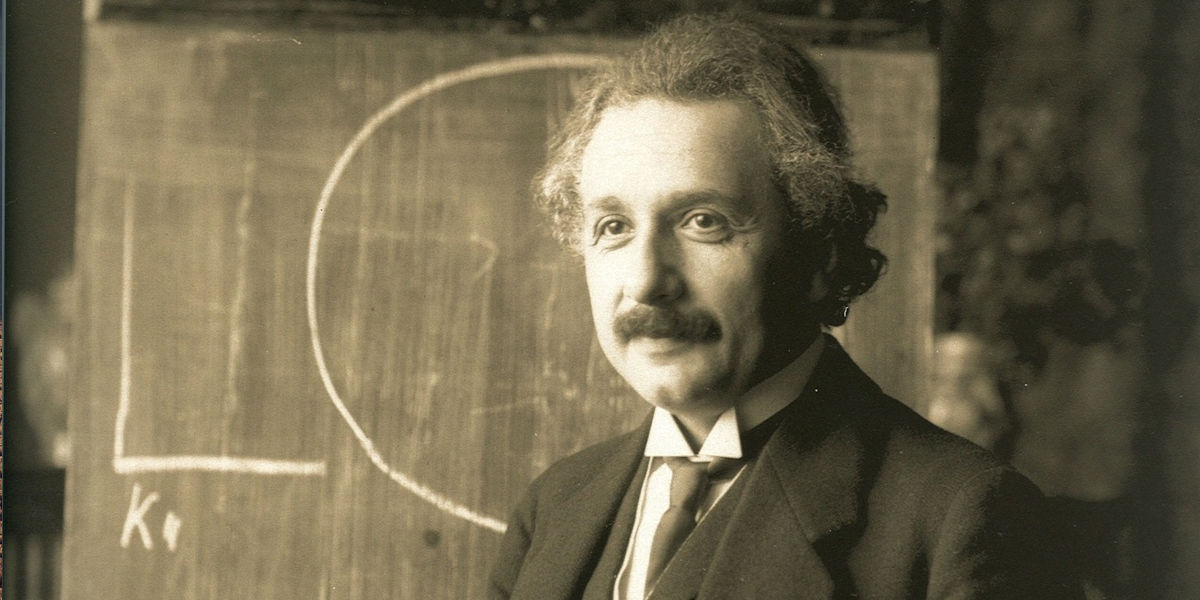Imagine for a moment a universe where space could bend and time was malleable! It's no science fiction tale, but the profound acknowledgement of the famous physicist, Albert Einstein, who presented the world with a groundbreaking cosmological model of thought, the Relativity Theory. As far-fetched as it sounds, Relativity Theory Explained in the simplest terms, bids us to perceive the universe from an entirely unique angle, where the conventional laws of physics bow to space and time which no longer remain distinct entities but intertwine into a single entity, space-time.
The cafe where you sip coffee, the road where your car glides everyday, the sky you gaze upon, everything exists in this four-dimensional geometry called space-time. Moreover, the curvature of space-time is determined by the mass and energy present, leading to a unique effect on the movement of objects. Because of Einstein's theory, we unlocked the keys to explain everything from the notion of black holes to the Big Bang itself.
The Tale of Two Theories: Difference Between General and Special Relativity
Understanding the abstract concept of relativity revolves chiefly around two monumental theories: the Theory of Special Relativity and the Theory of General Relativity. But what exactly is the Difference Between General and Special Relativity?
Introduced in 1905, Special Relativity sheds light on space and time in relation to observers moving at constant speeds. In this frame, Einstein shattered conventional wisdom by declaring that time and space aren't absolute entities but rather they are relative and interwoven into a fabric-like continuum known as space-time. Furthermore, he concluded that nothing can travel faster than the speed of light.
Unsatisfied, Einstein further refined these tenets and after a decade of rigorous work, concocted the General Relativity Theory in 1915. This theory marked a paradigm shift by introducing gravity as not just a force acting between two objects but a curvature of space-time caused by mass and energy. It allows the prediction of black holes, gravitational waves, and even the expansion of the Universe.
Breaking the Speed of Light: Can We Travel Faster Than Light?
Following the establishment of Einsteinís theories, a burning question sparked among scientists and science-enthusiasts alike: Can We Travel Faster Than Light? Einstein's equations pointed to the possibility of bending space-time, creating shortcuts known as wormholes, hypothesis of warp drives, and even time travel. But it all comes at the cost of bending the very laws of physics as we understand them. To answer this question, we must journey to the frontiers of our current scientific understanding and perhaps even venture beyond.
However, until now, achieving faster-than-light (FTL) travel remains a theoretical concept, primarily due to the insurmountable energy requirements and technological difficulties. Furthermore, expanding or contracting space-time could also summon unforeseen consequences, challenging our current understanding of physics.
The Beauty of Space and Time
-
The structure of space and time as formulated by Albert Einstein in his theory of relativity, is a profound example of the breathtaking beauty and symmetry found in the principles of modern physics. Einstein posited that space and time are interwoven into a four-dimensional fabric referred to as the spacetime continuum. Under this framework, matter doesn't merely exist within this fabric, but rather it bends and warps spacetime itself. Itís these curves and contours, caused by the force of gravity, that govern the movement of matter.
-
In a sense, we are not truly travelling through a static world; instead, everything in the universe is constantly falling, following the most straightforward route along the undulating terrain of spacetime. This fundamental revelation changed our understanding of the Newtonian gravitational model, allowing us to predict occurrences such as the bending of light as it passes near a massive objectósomething that has been confirmed through repeated scientific experiments.
The Possibility of Warp Speed
-
Star Trek popularized the concept of warp driveótravel faster than the speed of lightówith its starship, the USS Enterprise boldly going where no one has gone before. However, in reality, the task of achieving such speeds is far more complicated and currently still unreachable. According to Einstein's Special Theory of Relativity, as an object approaches light speed, its relativistic mass increases, requiring ever-greater amounts of energy to continue accelerating. Hence, reaching or exceeding the speed of light appears to be impossible, at least for now.
-
Though it's important to note, physics does contain theories and concepts that linger around the notion of faster-than-light travel, such as tachyons and wormholes. While still firmly theoretical and highly controversial, they at least provide a glimmer of hope for interstellar voyages at warp speed. Tachyons are hypothetical particles that always move faster than light, and wormholes are theorized as shortcuts through spacetime, potentially linking disparate parts of the universe instantaneously.
-
However, the creation and stable maintenance of a wormhole require what's known as 'exotic' negative energyósomething that may or may not exist. As for tachyons, despite decades of continued research, no experimental evidence has surfaced to substantiate their existence. Therefore, for the time being, warp speed remains firmly in the realm of science fiction rather than reality.
Conclusion
The concept of bending space and time continues to inspire awe and wonder, and the quest for faster-than-light travel remains an intriguing topic within the scientific community. While we remain limited by the boundaries set forth in our current understanding of physics, the cosmos is vast and mysterious, and who's to say what future discoveries might alter our perspective. Until then, we can only continue to explore, learn, and imagine.




